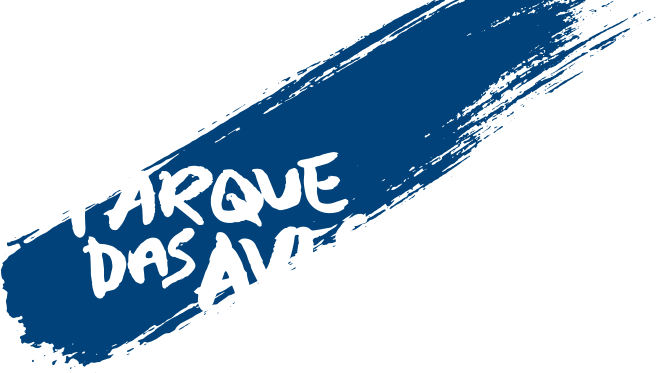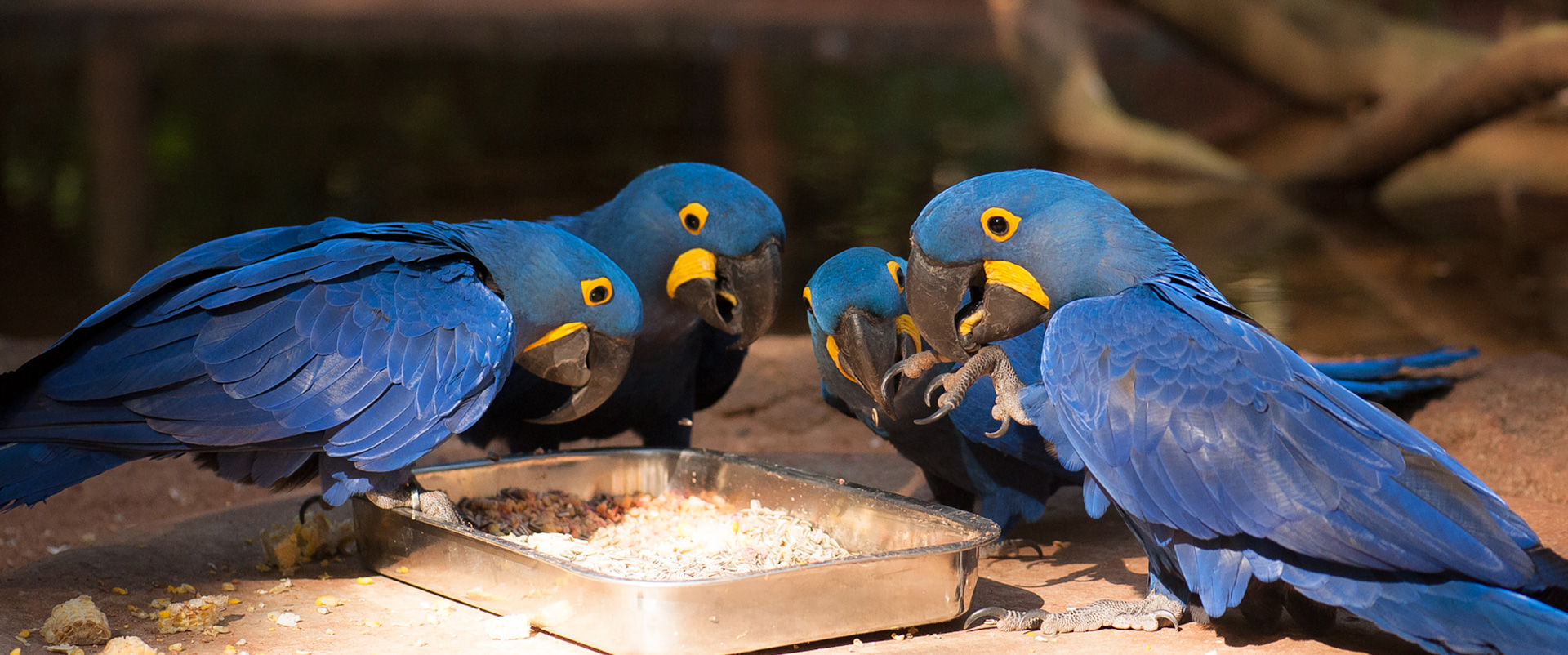
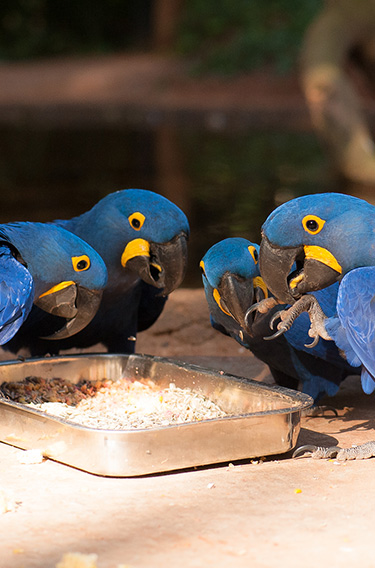

NUTRITION
The success of conservation programs is also directly related to correct feeding habits. Well-nourished birds have greater immunity, disease resistance, and higher reproductive rates, thus increasing the chances of perpetuation of the species. The provision of a balanced diet is a preponderant factor for increasing overall health, healthy growth, reproductive success, and the longevity of the birds. To achieve these objectives, we have at Parque das Aves the Animal Nutrition Division that is responsible for preparing and controlling the quality of the diets. A Zootechnician coordinates the activities developed there, in addition to formulating a balanced diets, carrying out systematic studies of nutritional needs, feeding habits, and the chemical composition of the items consumed in nature. This daily dietary planning depends on the physiological peculiarities of the animals, climate demands, possible veterinary treatment, among other issues. Once the diet calculations are made, the nutritional sheets are compiled and then forwarded to the staff that prepares the food.
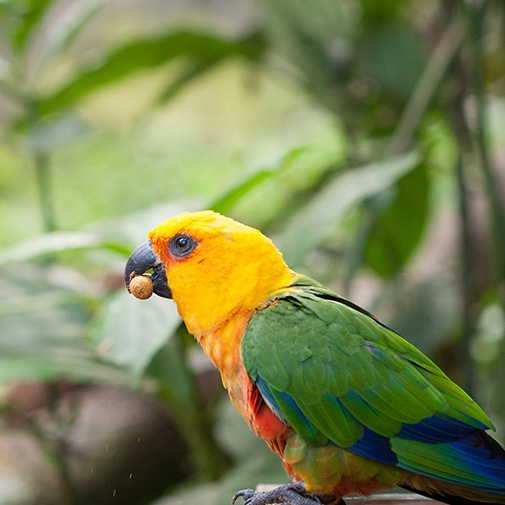
 |
NUTRITION |

The success of conservation programs is also directly related to correct feeding habits. Well-nourished birds have greater immunity, disease resistance, and higher reproductive rates, thus increasing the chances of perpetuation of the species. The provision of a balanced diet is a preponderant factor for increasing overall health, healthy growth, reproductive success, and the longevity of the birds. To achieve these objectives, we have at Parque das Aves the Animal Nutrition Division that is responsible for preparing and controlling the quality of the diets. A Zootechnician coordinates the activities developed there, in addition to formulating a balanced diets, carrying out systematic studies of nutritional needs, feeding habits, and the chemical composition of the items consumed in nature. This daily dietary planning depends on the physiological peculiarities of the animals, climate demands, possible veterinary treatment, among other issues. Once the diet calculations are made, the nutritional sheets are compiled and then forwarded to the staff that prepares the food.
The Nutrition Division has seven employees dedicated to food handling activities (receiving, storage, preparation, and distribution). This team is responsible for preparing approximately 3,000 meals a day for a very wide variety of food habits. The annual consumption of food is 40 tons and 60 tons of plants, meat, and various supplements. We have a vivarium to offer quality food for the carnivores with an annual production of 2 tons of prey (rodents, rabbits, and insects) in a physical structure that meets requirements of comfort, maintaining good levels of health, nutrition, genealogical control, and consequently not jeopardizing the productive indexes. Our offerings of prey prioritize animal welfare criteria including offering items of environmental enrichment to these animals, as well as a humane slaughter of the vertebrates before their delivery. The Nutrition Division instituted an Animal Nutrition & Food Security Program that closely follows standards of good practice for manipulation, procedures, and food safety, establishing a process of nutritional control and production of safe diets. This program promotes compliance with the determinations present in the laws related to animal feed while ensuring safety from a hygienic and sanitary point of view in the food offered to animals under our care.
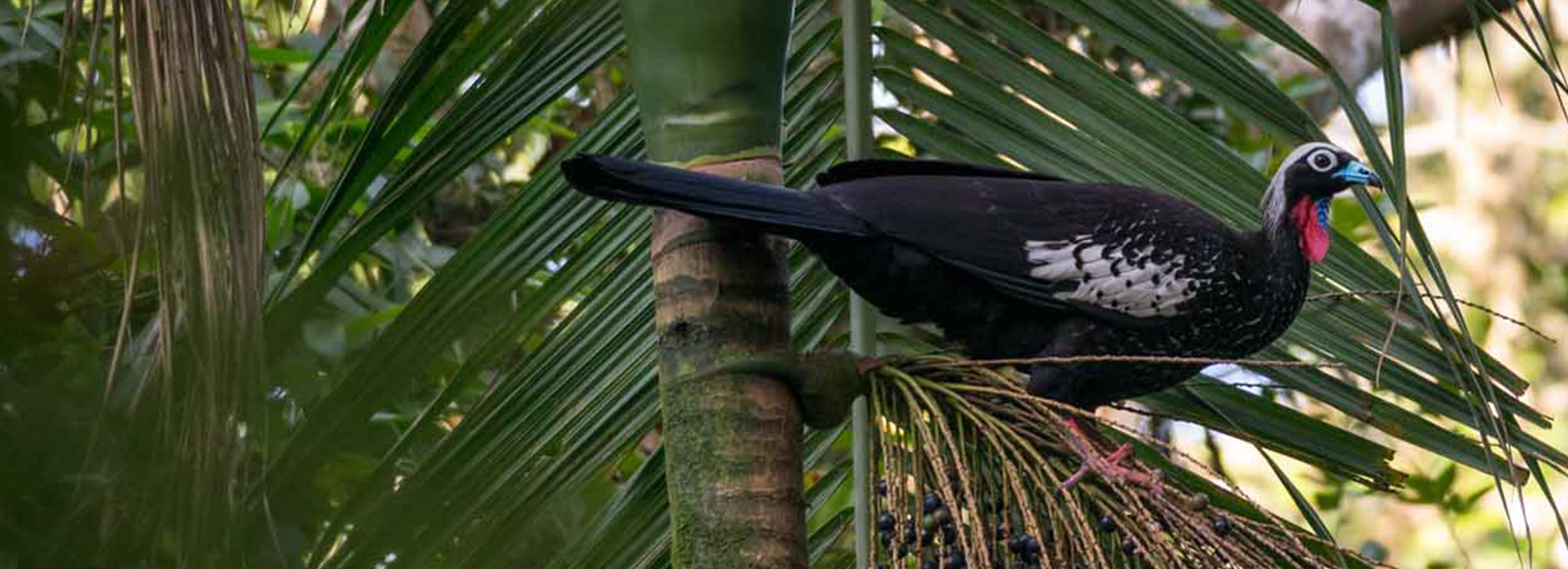
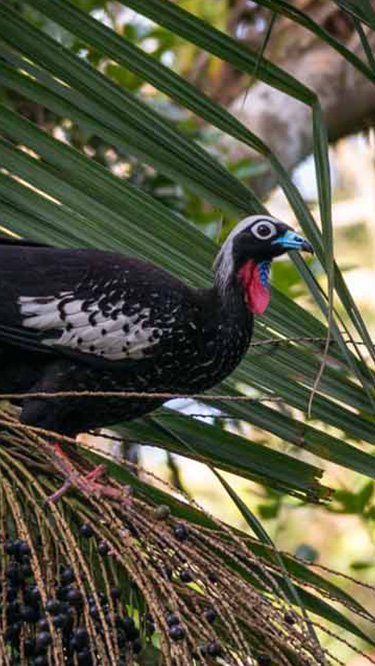
Photo: Octavio Campos Salles
A large number of bird species at Parque das Aves consume in situ a variety of native fruit and many of these birds have been identified as pollinators and dispersers of seeds. Taking this into account, the Animal Nutrition Division created with a scientific bases a catalog of ornithophilous tree species native to the Atlantic Rain Forest of Paraná. This document provides information such as the scientific and common name of these plants, which species the birds are attracted to, the nutritional content of the fruit, which parts are consumed (nectar, pollen, fruit, seeds, petals, leaves), and fruit-bearing periods (seasonality). The main objective is to have a database of native fruit tree species for planting at the Park using agroecological principles of cultivation in order to have specific native fruit the entire year for the species under our care, contributing not only to a more natural nutrition with food of high nutritional value, but also collaborating in the conservation of these botanical species native to the Atlantic Rainforest.
CLICK ON THE LINKS BESIDE AND LEARN MORE
CLICK ON THE LINKS BELOW AND LEARN MORE
HOME PROJECTS
> BLUE-FRONTED AMAZON
> RED-BROWED AMAZON
> BIRDS OF IGUAÇU
> PARTNERSHIPS
> SHELTER AND RECOVERY
> REHABILLITATION
> REPRODUCTIVE MANAGEMENT
> REPRODUCTION FOR CONSERVATION
> BEHAVIOR AND WELFARE
> NUTRITION
> STRATEGIC COMMUNICATION FOR CONSERVATION
> AMBIENTAL EDUCATION AND SOCIAL SCIENCE
SOS FAUNA
RED-SPECTACLED AMAZON PARROT PROJECT
PARROTS AT THE GRAMADÃO SQUARE
> RESEARCH
> THE VETERINARY SECTOR AND THE ATLANTIC RAINFOREST BIRDS
> CONSERVATION BIOLOGY, ZOOLOGY, AND VETERINARIAN IN THE FIELD
 Every day from 8:30am to 4:30pm
Every day from 8:30am to 4:30pm Prices
Prices


